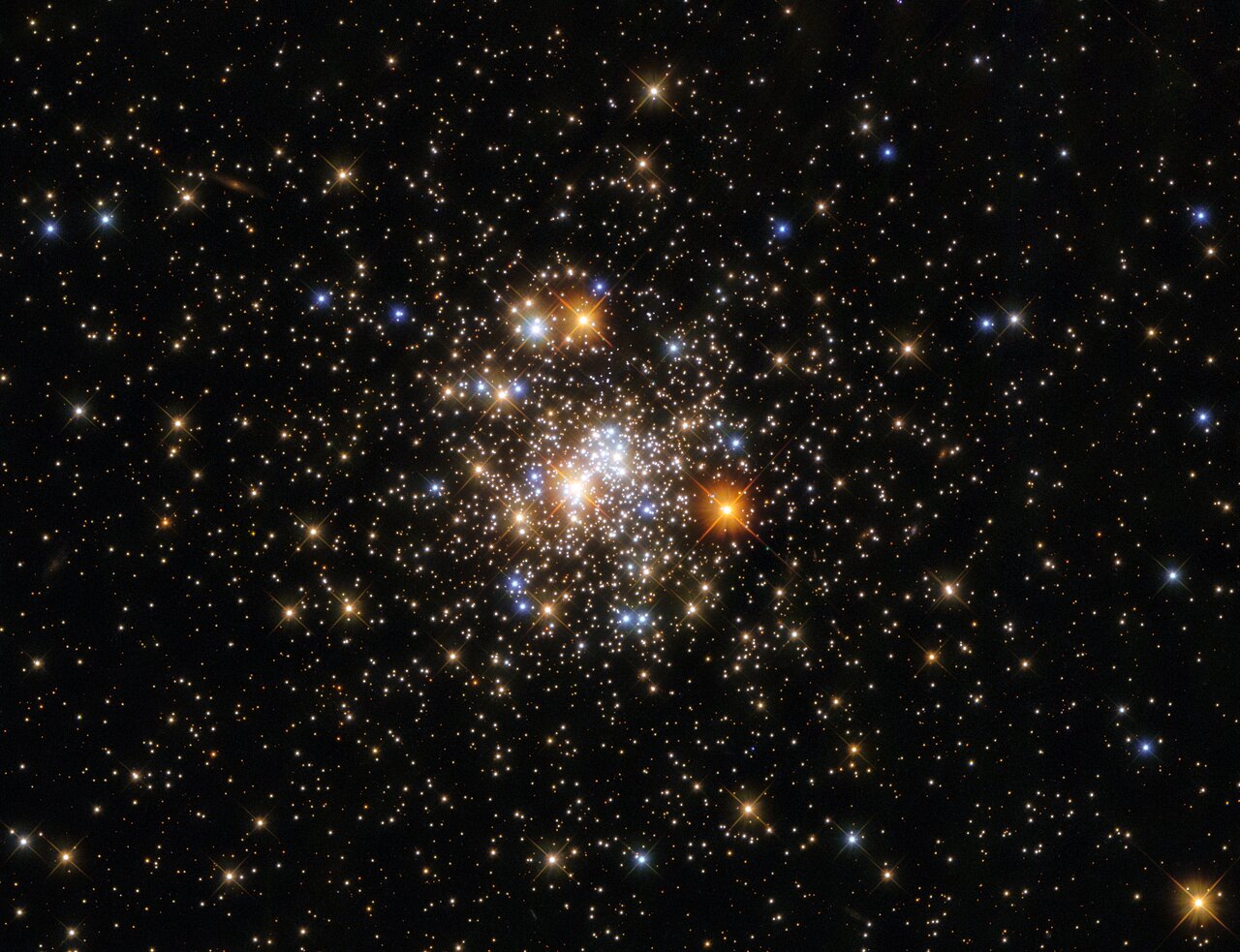Vibrant globular cluster sparkles in new Hubble telescope photo
Astronomers used two Hubble instruments to study this celestial body.
A famous telescope peered into the constellation Sagittarius to view a gorgeous assortment of candy-colored stars.
The team behind the Hubble Space Telescope recently published this image of a celestial body called NGC 6717 that's located about 20,000 light-years away from Earth. It's a globular cluster, or a round collection of stars that are tightly held together by gravity. The stellar population is denser at the center of the globular cluster than it is at the edges, giving it its signature look.
The view was published on Sept. 6 by the European Space Agency (ESA), which manages Hubble alongside NASA.
Related: The best Hubble Space Telescope images of all time!

But according to the Hubble team, not all of the bright speckles in this image belong to the cluster: Some of the stars are located much closer to Earth than the distant cluster. These nearby stars are identifiable by the light spiking from their sides in a criss-cross formation, which happens when their starlight interacts with the hardware that supports Hubble's secondary mirror, wrote ESA officials.
Globular clusters are found across the night sky, but some are easier to study than others. Bodies like galaxy NGC 6717 fall into the latter category, because their location in the constellation Sagittarius puts them near the center of the Milky Way in the sky. The core of Earth's home galaxy is filled with gas and dust that absorb light, making it trickier for astronomers to study the properties of this globular cluster.
To resolve this, researchers studied NGC 6717 using two Hubble instruments: its Wide Field Camera 3 and the Advanced Camera for Surveys, which collectively watch the universe across several wavelength categories from the electromagnetic spectrum.
Get the Space.com Newsletter
Breaking space news, the latest updates on rocket launches, skywatching events and more!
Follow Doris Elin Urrutia on Twitter @salazar_elin. Follow us on Twitter @Spacedotcom and on Facebook.
Join our Space Forums to keep talking space on the latest missions, night sky and more! And if you have a news tip, correction or comment, let us know at: community@space.com.

Doris is a science journalist and Space.com contributor. She received a B.A. in Sociology and Communications at Fordham University in New York City. Her first work was published in collaboration with London Mining Network, where her love of science writing was born. Her passion for astronomy started as a kid when she helped her sister build a model solar system in the Bronx. She got her first shot at astronomy writing as a Space.com editorial intern and continues to write about all things cosmic for the website. Doris has also written about microscopic plant life for Scientific American’s website and about whale calls for their print magazine. She has also written about ancient humans for Inverse, with stories ranging from how to recreate Pompeii’s cuisine to how to map the Polynesian expansion through genomics. She currently shares her home with two rabbits. Follow her on twitter at @salazar_elin.









